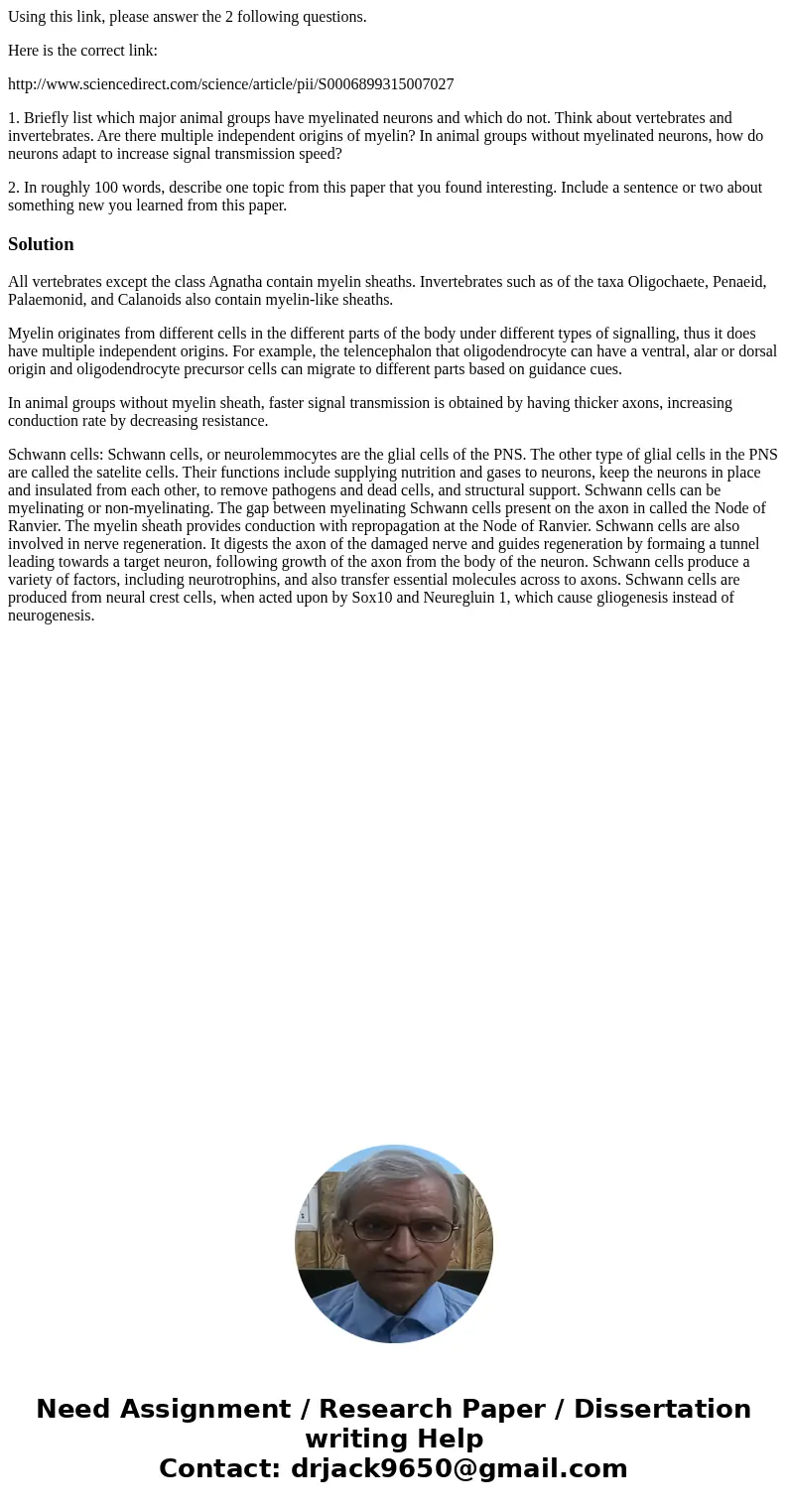Using this link please answer the 2 following questions Here
Using this link, please answer the 2 following questions.
Here is the correct link:
http://www.sciencedirect.com/science/article/pii/S0006899315007027
1. Briefly list which major animal groups have myelinated neurons and which do not. Think about vertebrates and invertebrates. Are there multiple independent origins of myelin? In animal groups without myelinated neurons, how do neurons adapt to increase signal transmission speed?
2. In roughly 100 words, describe one topic from this paper that you found interesting. Include a sentence or two about something new you learned from this paper.
Solution
All vertebrates except the class Agnatha contain myelin sheaths. Invertebrates such as of the taxa Oligochaete, Penaeid, Palaemonid, and Calanoids also contain myelin-like sheaths.
Myelin originates from different cells in the different parts of the body under different types of signalling, thus it does have multiple independent origins. For example, the telencephalon that oligodendrocyte can have a ventral, alar or dorsal origin and oligodendrocyte precursor cells can migrate to different parts based on guidance cues.
In animal groups without myelin sheath, faster signal transmission is obtained by having thicker axons, increasing conduction rate by decreasing resistance.
Schwann cells: Schwann cells, or neurolemmocytes are the glial cells of the PNS. The other type of glial cells in the PNS are called the satelite cells. Their functions include supplying nutrition and gases to neurons, keep the neurons in place and insulated from each other, to remove pathogens and dead cells, and structural support. Schwann cells can be myelinating or non-myelinating. The gap between myelinating Schwann cells present on the axon in called the Node of Ranvier. The myelin sheath provides conduction with repropagation at the Node of Ranvier. Schwann cells are also involved in nerve regeneration. It digests the axon of the damaged nerve and guides regeneration by formaing a tunnel leading towards a target neuron, following growth of the axon from the body of the neuron. Schwann cells produce a variety of factors, including neurotrophins, and also transfer essential molecules across to axons. Schwann cells are produced from neural crest cells, when acted upon by Sox10 and Neuregluin 1, which cause gliogenesis instead of neurogenesis.

 Homework Sourse
Homework Sourse